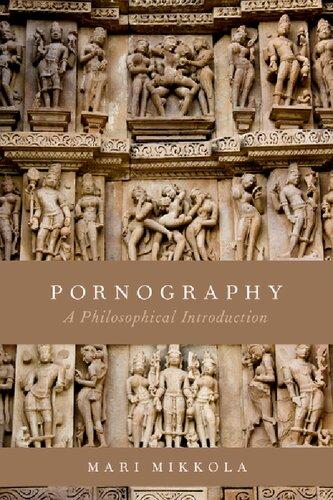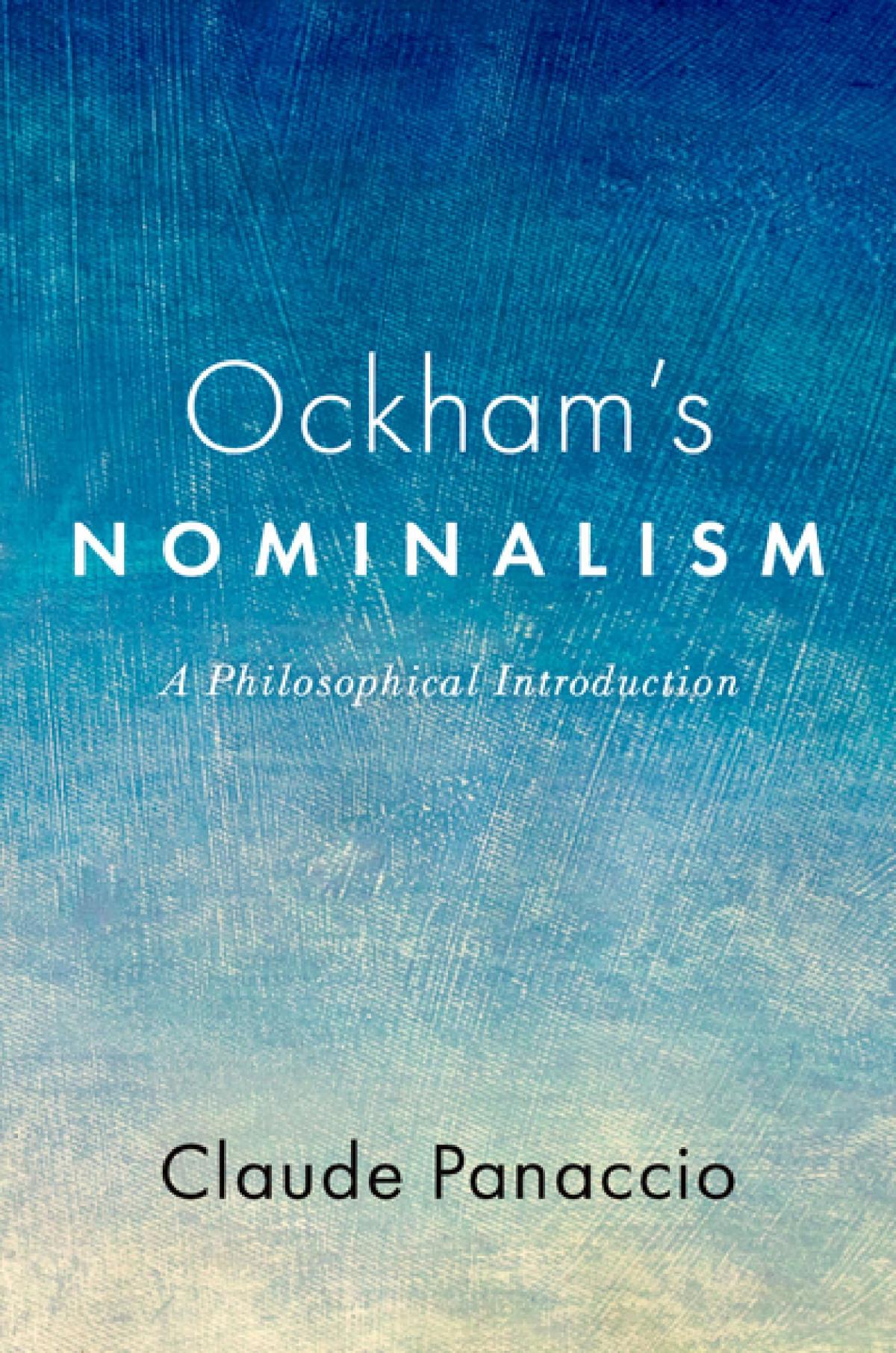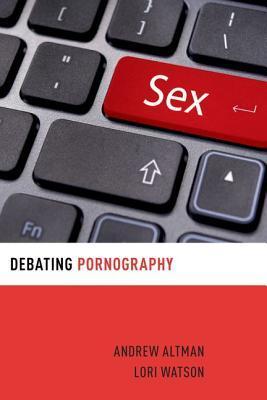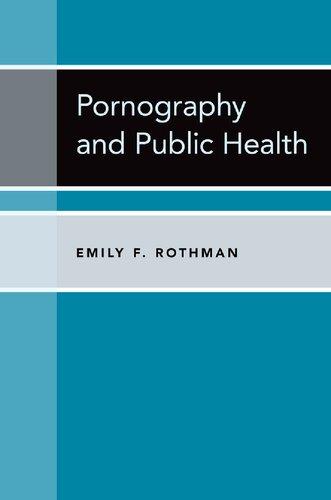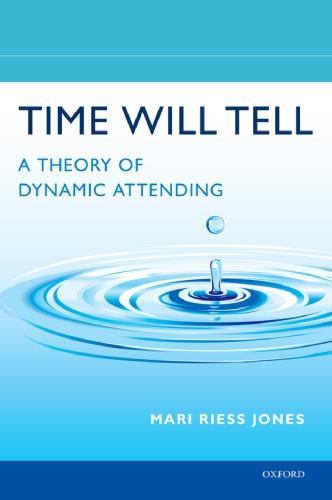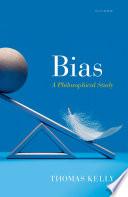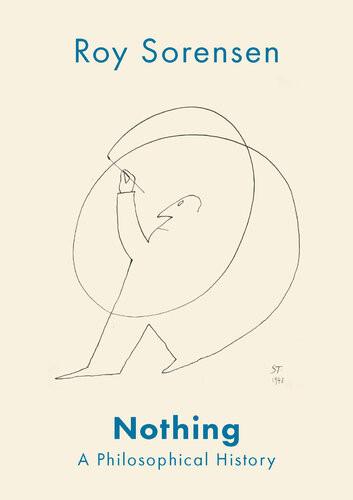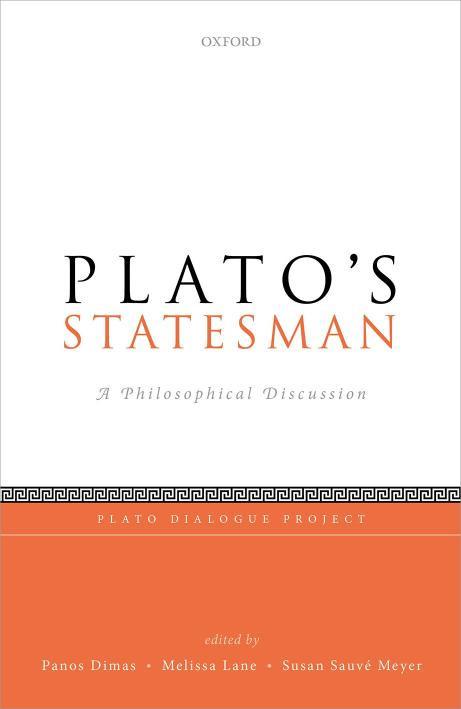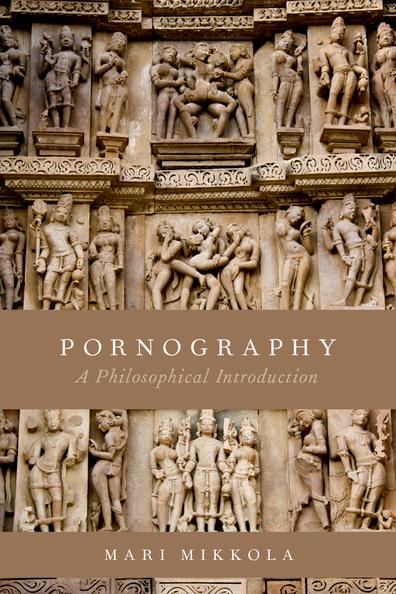PORNOGRAPHY
A Philosophical Introduction
Mari Mikkola
Oxford University Press is a department of the University of Oxford. It furthers the University’s objective of excellence in research, scholarship, and education by publishing worldwide. Oxford is a registered trade mark of Oxford University Press in the UK and certain other countries.
Published in the United States of America by Oxford University Press 198 Madison Avenue, New York, NY 10016, United States of America.
© Oxford University Press 2019
All rights reserved. No part of this publication may be reproduced, stored in a retrieval system, or transmitted, in any form or by any means, without the prior permission in writing of Oxford University Press, or as expressly permitted by law, by license, or under terms agreed with the appropriate reproduction rights organization. Inquiries concerning reproduction outside the scope of the above should be sent to the Rights Department, Oxford University Press, at the address above.
You must not circulate this work in any other form and you must impose this same condition on any acquirer.
Library of Congress Cataloging-in-Publication Data
Names: Mikkola, Mari, author.
Title: Pornography : a philosophical introduction / Mari Mikkola. Description: New York : Oxford University Press, [2019] | Includes bibliographical references and index.
Identifiers: LCCN 2018018520 | ISBN 9780190640071 (pbk. : alk. paper) | ISBN 9780190640064 (cloth : alk. paper) | ISBN 9780190640101 (online content) | ISBN 9780190640088 (updf) | ISBN 9780190640095 (epub)
Subjects: LCSH: Pornography.
Classification: LCC HQ471 .M635 2018 | DDC 306.77/1—dc23
LC record available at https://lccn.loc.gov/2018018520
1 3 5 7 9 8 6 4 2
Paperback printed by WebCom, Inc., Canada
Hardback printed by Bridgeport National Bindery, Inc., United States of America
3. Does Pornography Silence Women?
3.1. Introduction
3.2. The
3.3. Philosophical
3.4. Practical
3.5. Alternative
3.6. Pornography’s
3.7. Methodological
4.
4.1. Introduction
4.6. Freedom
4.7. Upshot
5.
5.2. What
5.3.1. The
5.3.2. Pornographic
5.3.3. Pornographic
5.4. The
5.5. Dehumanizing
6. The Aesthetics of Pornography
6.1. Introduction
6.2. Pornography
6.3. Art
6.4. Morality of Digitally Generated
6.4.1. Instrumental
6.4.2. Intrinsic
6.5. Concluding
7.
7.1. Introduction
7.2. What
7.3. Industry
7.4. Emancipation
7.5. The
7.6. Summing
8.
8.1. Introduction
8.2. Social
8.3. Artifactual
8.4. Personification
8.5. The
ACKNOWLEDGMENTS
In response to hearing that I was writing this book, someone once remarked to me: Is there really that much to say about pornography philosophically? After a talk that I recently gave on philosophical treatments of pornography, someone else remarked that since the topic is so profoundly disgusting and vulgar, I cannot call my work philosophical in any genuine sense at all. From the pages of this book, I hope readers will come to agree with me that there is still much to say about pornography philosophically and that my treatment of the topic is genuinely philosophical.
Thankfully, many have not viewed this project with suspicion or apprehension. As I have presented materials from this book over the past couple of years, I have found lots of academic philosophers who consider the topic not only of importance to the discipline but also (and rightly so) crucial for understanding our contemporary social and cultural lives. I hope to advance our knowledge in philosophy and beyond with this work, and I am indebted to the many helpful and challenging discussions that have taken place. I have presented draft versions of this book’s materials at numerous conferences, workshops, and reading groups over the past few years. These events
took place (to the best of my recollection) in Amsterdam; Ann Arbor; Barcelona; Berlin; Cambridge, Massachusetts; Chicago; Frankfurt; Groningen; Hamburg; Helsinki; Kent; Lancaster; London; Oxford; and Rotterdam. I am very grateful to audiences for their comments, critiques, and conversations on the topics of this book. Specific thanks go to (with apologies for anyone I may have missed): Louise Antony, Nancy Bauer, Lisa Baurmann, Bridget Brasher, Francesca Bunkenborg, Esa Díaz-León, Catarina Dutilh Novaes, Anne Eaton, Stephanie Elsen, Irina Florea, Yasmin Granfar, Sally Haslanger, Frank Hindriks, Felicia Hoeer, Miguel Hoeltje, Jules Holroyd, Hilkje Hänel, Cathrin Höfs, Antti Kauppinen, Nora Kreft, Patsy l’Amour laLove, Rae Langton, Maria Lasonen-Aarnio, Dan López de Sa, Resa-Philip Lunau, Hans Maes, Ishani Maitra, Laura Méritt, Johanna Müller, Lina Papadaki, Jon Robson, Gonzalo Rodriguez-Pereyra, Komarine Romdenh-Romluc, Jennifer Saul, Grant Tavinor, Alex Thinius, Cain Todd, Michel Vargas Vargas, Pekka Väyrynen, Garrath Williams, Charlotte Witt, Lou Witte, Richard Woodward, Julia Zakkou, and Valeria Zaitseva. I am also grateful to the participants of a graduate class based on this book that took place at the Humboldt-Universität zu Berlin for having read the entire manuscript. A huge debt of gratitude goes to Oxford University Press’s fantastic editorial team: Lucy Randall, and Hannah Doyle. Two anonymous referees provided further significant challenges that greatly improved my thinking along the way.
Some parts of the book have previously been published in: “Illocution, Silencing and the Act of Refusal,” Pacific Philosophical Quarterly 92 (2011): 415–437; “Pornography, Art and Porno-Art,” in Pornographic Art and the Aesthetics of Pornography, ed. H. Maes, 27–42 (Basingstoke: Palgrave-Macmillan, 2013); “Pornographic Artifacts: Maker’s Intentions Model,” in Beyond Speech: Pornography and Analytic Feminist Philosophy, ed. M. Mikkola, 113–134 (New York: Oxford University Press,
2017); and “Pornographic Videogames: A Feminist Examination,” in The Aesthetics of Video Games, ed. Jon Robson and Grant Tavinor (New York: Routledge, 2018). I express my thanks and acknowledge permission to use these works in revised and abridged form. Additionally, I acknowledge my gratitude to the HumboldtUniversität zu Berlin Excellence cluster “Freiräume” for having provided me with a personal research grant that allowed me to write the first half of this book.
Finally, I am grateful to my “Dutch team” for providing much needed R&R over the past few years and while conducting this research: as always, an immense thanks to my partner Bas. Dank je is also due to my good friend Robbie for having helped me with some of the more empirical parts of this book.
Introduction
What Is Pornography?
I know it, when I see it.
Justice Potter Stewart
The explicit description or exhibition of sexual subjects or activity in literature, painting, films, etc., in a manner intended to stimulate erotic rather than aesthetic feelings.
Oxford English Dictionary
Playboy is art, not pornography.
Cooper Hefner
Pornography is the undiluted essence of anti-female propaganda.
Susan Brownmiller
If it exists, there is porn on it.
Rule 34, The Urban Dictionary
1.1. tA sk o F t H e B ook
This book offers an opinionated introduction to and an analysis of philosophical treatments of pornography. It is a work in analytic philosophy; hence, one might expect my first move to be to define the concept of pornography and to offer some necessary and sufficient
conditions for some film, image, or text to count as pornography.1 Perhaps surprisingly, I won’t start with such a definitional task. Perhaps even more surprisingly, this is because such a definitional undertaking has turned out to be far from straightforward. As US Supreme Court Justice Potter Stewart in 1964 famously claimed, although he cannot provide a clear definition of pornography, he knows what counts as pornography when he encounters it. Justice Stewart was relying on his intuitive conception of pornography; unfortunately, other people rely on theirs. For instance, many Americans (at least of a certain generation) would say that magazines like Hustler and Playboy are paradigm instances of pornography. The heir of Playboy, Cooper Hefner, disagrees: as cited in the epigraph, he stated in a more recent newspaper article that the magazine is not pornography and that it empowers women.2 The OED’s definition of pornography is rather innocuous and tame sounding. Then again, Susan Brownmiller takes pornography to be the “undiluted essence of anti-female propaganda” (1975, 394). And even the most innocent sounding Internet searches can yield a wealth of pornography hits.
Many philosophers disagree with all of the above conceptions irrespective of their stance on the morality of pornography. Pretheoretically, pornography involves the following: sexually explicit content, materials without social value, intention to sexually arouse consumers, and/or being used in certain ways (e.g., as “masturbation materials”). How to understand any of these in detail and how to conceptualize their importance when examining pornography are live questions though. As things stand, there is no agreed
1. Throughout I will use the italicized expression pornography to denote the concept, while ‘pornography’ denotes the term. When I speak of pornography without italic or singlequotes, I am talking about the real-world phenomenon.
2. Bignell, “Playboy Is Art, Not Porn, Says Hefner Heir,” The Independent, January 6, 2013, https:// www.independent.co.uk/ news/ people/ news/ playboy- is- art- not- porn- sayshefner-heir-8439849.html. Accessed August 7, 2018.
upon definition of pornography either in philosophy or in society at large. Yet, pornography seems to play a huge role in contemporary lives: pornography-related inquiries figure as some of the most frequent Internet searches. “Our” inability to say precisely what pornography amounts to is puzzling given how commonplace pornography has become.
One hindrance to defining and understanding pornography is its highly emotive and deeply divisive nature not only in the wider society but also in philosophy. Over the past few decades, entrenched and seemingly straightforward anti- and pro-pornography positions have emerged. In the popular press, those opposing pornography are often portrayed as prudish, sex-negative feminists, who advocate censorship; pornography’s defenders are characterized as sex-positive liberals, who fight for free speech and expression. Lively philosophical debates about pornography have emerged since the 1980s, and there is by now a rich literature on the topic. Nonetheless, these debates are still fraught with many difficult questions, and precious little agreement exists on basic questions: What is pornography? What (if anything) does pornography do? Is the consumption of pornography a harmless private matter, or does it harm its users in some ways? Does pornography harm nonusers, like women generally, by increasing the prevalence of sexualized violence? What, if anything, should legally be done about pornography? Is feminist pornography possible, and if so, what would make pornography feminist? Not having a clear idea about what we are talking about when we talk about pornography has hindered philosophical attempts to answer these questions. There is still much confusion over the conceptual and political commitments of different anti- and pro-pornography positions, while different sides tend to portray a simplistic picture of their opponents. Participants in the debates end up easily talking past one another. Furthermore, given the emotive nature of the topic, interlocutors can miss the fact that existing positions are much more nuanced and far more complex
than they might at first seem. Indeed, different sides on the debate might not even disagree with one another, contra appearances.
In light of these difficulties and (apparent) disagreements, this book examines philosophical pornography debates with the aim to steady and clarify the waters. It does not put forward one overarching argument throughout but rather evaluates relevant arguments thematically. In so doing, the book has three broad goals. First, to conduct a comprehensive and careful investigation of different philosophical positions for and against pornography, which will provide much needed clarity on how pornography and other key notions are (and should be) understood. The book hence also clarifies what different views are theoretically and politically committed to. Second, to investigate important methodological issues by considering how empirically adequate existing philosophical positions are relative to the sizeable pornography industry. This will involve also considering alternative pornographies that are said to be feminist, “female-friendly,” and nonheteronormative. Third, to enrich extant philosophical debates by examining how discussions in different subareas (like feminist philosophy and aesthetics) intersect with and profit from one another—something surprisingly absent in contemporary philosophizing over pornography. Although my investigation in this book advances unapologetically from an analytic feminist philosophical perspective, it will be neutral about pornography’s moral status at the outset.3 One of the big lessons to emerge from this work is that given how complex a phenomenon pornography is, it is far
3. To clarify: analytic feminism combines the practical focus of feminism as a political movement to end sex- and/or gender-related injustices with common analytical methods (e.g., conceptual analysis and systematic argumentation). Feminist philosophy aims both to critique patriarchal social structures by utilizing mainstream philosophical tools and to shape mainstream philosophy with the help of feminist political insights. It offers a way to do politically informed philosophical investigation without being restricted just to political philosophy.
from easy (if not impossible) to say that all pornography is harmful in some sense or that pornography does no harm at all. Our evaluative judgments about pornography must be made in a piecemeal fashion, and the prospects of making general normative claims about pornography are poor. However, as I will argue, this does not preclude meaningful philosophical work on pornography. There is still much to be done, as will become clear from the pages of this book. Nevertheless, before we can see what work still needs to be done, let us briefly look at what work has already been undertaken by way of background and in preparation for the discussions to come.
1.2. F rom o B s C en I t Y to degr A d At I on
At the time of Justice Stewart’s comment in the epigraph, pornography in the United States and the United Kingdom was understood on the model of obscenity. Although the precise formulation of the US obscenity laws underwent a number of changes, the most relevant for philosophical interjections into pornography debates dates to the 1973 case of Miller v. California. Following this case, a work is obscene if an average, reasonable, person applying community standards would find the work as a whole to lack any serious literary, artistic, political, or scientific value, and the work describes or depicts in an obvious way offensive sexual conduct (Dwyer 1995, 242). Key aspects of this understanding are that the work is sexually explicit, primarily intended to produce sexual arousal in viewers and, in some sense, bad—it has a morally corrupting influence, and it is indecent or causes indecency. This understanding makes pornography a matter of public morality, and it pits conservative opponents of pornography against “sexual radicals.” According to the former, pornography removes sex from its proper setting of monogamous, heterosexual marriage, which in turn debases humanity and regresses
human progress (for an overview of such views, see Berger 1977). Pornography is morally corrupting, and to prevent this, the state is permitted to prohibit access to pornography even to consenting adults (Baird and Rosenbaum 1991, pt. 4).
Feminist philosophers and theorists, however, commonly renounce the obscenity standard, regardless of whether they oppose pornography. In opposing patriarchy, feminist theorists and activists welcome ruptures to community standards. They have also found the talk of “reasonable persons” to be about “reasonable men” in disguise Furthermore, feminists do not typically oppose pornography for its sexual content or putative offensiveness, and so they vehemently disagree with pornography’s conservative opponents. Rather, they argue, pornography harms women. One cluster of such arguments has been framed around the idea that pornography involves the degradation of women. These arguments advance content-based moral objections to pornography too, albeit in a very different form to those advanced by conservative critics. In short: although pornography is not morally objectionable due to its sexual content, in treating women as mere sex objects, it degrades women (for a discussion of this argument, see Garry 1978). On this view, what is morally objectionable about pornography’s content is that it de- grades [sic] women by assigning them lower value and lower moral status (Hill 1987). Typically, though, the mere depiction of lower value does not suffice. Rather, pornography is about verbal and pictorial materials that represent and describe “sexual behavior that is degrading or abusive to one or more of participants in such a way as to endorse the degradation” (Longino 1980, 43). For pornography to endorse degradation is for it to communicate its approval and recommendation of sexual behavior that devalues women. More specifically, this means that the degradation is represented as pleasurable for both the male and female performers, and there is “no suggestion that this sort of treatment of others is
inappropriate to their status as human beings” (Longino 1980, 43–44). In a slightly different vein, Rosemarie Tong (1982) argues that pornography celebrates and encourages inequality: the sexual exchanges are degrading in that the desires and experiences of one party (usually, female) are not regarded by other participants as having validity or equal importance. Either way, pornography supposedly tells deep and vicious lies about women that both Longino and Tong consider defamatory.
1.3. F rom degr A d At I on to se X
d I s C r I m I n At I on
Although sharing many aspects with the above positions, in championing their antipornography stance, Catharine MacKinnon and Andrea Dworkin put forward a subtly different feminist analysis of pornography’s harm. For them, pornography is not a ‘moral issue’. That is, a feminist argument against pornography should not be based on pornography being morally objectionable. Instead, they advanced a well-known view of pornography as a practice of sex discrimination: it is harmful in violating women’s civil rights (A. Dworkin 1981; MacKinnon 1987, 1989b, 1993). This view is less about what pornography represents (its morally problematic content), and more about what pornography does. In short, pornography celebrates, promotes, and legitimizes sexualized violence against women. It eroticizes male dominance and female submissiveness and puts this forward as the apparent truth about sex (MacKinnon 1987, 171). Pornography purports to mirror reality, but it, according to this view, constructs one. This is what pornography does and not merely what it depicts: “It institutionalizes the sexuality of male supremacy, fusing the erotization of dominance and submission with the social construction of [gender]” (MacKinnon 1987, 172). With this in
mind, and against the obscenity standard, MacKinnon and Dworkin famously defined pornography as the graphic sexually explicit subordination of women through pictures and words that also includes women dehumanized as sexual objects, things, or commodities; enjoying pain or humiliation or rape; being tied up, cut up, mutilated, bruised, or physically hurt; in postures of sexual submission or servility or display; reduced to body parts, penetrated by objects or animals, or presented in scenarios of degradation, injury, torture; shown as filthy or inferior; bleeding, bruised, or hurt in a context that makes these conditions sexual. (MacKinnon 1987, 176)
Pornography is said to be about power with sex used as a weapon of women’s subjugation. This is supposedly apparent from the root of ‘pornography’ being ‘porno’, which means prostitute or female captive (Steinem 1995). In pornography, then, free choice is absent and replaced by violence and dominance. Sexually explicit materials that are premised on equality and positive free choice count as erotica, which is about passionate love and mutual pleasure (MacKinnon 1987; see also Steinem 1995).4 If men, trans* people, or children are used in the place of and treated as if they were women, the work also counts as pornography.5 The Dworkin-MacKinnon view renders pornography by definition a gendered notion in that the manufacture
4. Andrea Dworkin (1981) rejects the distinction between inegalitarian pornography and egalitarian erotica. For Dworkin, the latter is simply a high-class variant of the former.
5. Quick note about terminology. In this book I will use ‘trans*’ as an inclusive umbrella term to capture a multitude of gender nonconforming identities. The term ‘transsexual’ is typically used to refer to individuals who use medical means and technologies to alter their bodies, so that their bodily presentation conforms to their gendered sense of self (Bettcher 2009). By contrast, ‘transgender’ refers to people who “do not conform to prevailing expectations about gender” by presenting and living genders that were not assigned to them at birth or by presenting and living
and consumption of pornography constitute women’s subordination (albeit only partially; more on this later). However, subordination is not the only thing that pornography does: it also silences women. In making violence the apparent truth about sex, pornography prevents women from saying otherwise. Pornography “strips and devastates women of credibility” in their attempts to articulate experiences of sexual assault, which are seen as part of ordinary sexual realities due to pornography—women are thus “stripped of authority and reduced and devalidated and silenced” (MacKinnon 1987, 193). In subordinating and silencing women, pornography is a practice of sex discrimination.
This Dworkin-MacKinnon account has been immensely influential both philosophically and legally, but (perhaps unsurprisingly) it has not convinced everyone. The view has been challenged by activists and theorists alike, and from both feminist and nonfeminist perspectives. I will consider a number of issues with the DworkinMacKinnon definition in the pages to come. But by way of background, consider some initial concerns. First, some object that feminist antipornography positions seemingly single out pornography as central to women’s oppression, which is problematic. It turns feminism into a single-issue movement organized around opposing pornography (for the history of US antipornography feminism, see Bronstein 2011). This, however, leaves other sites of oppression— such as the nuclear family, education, and politics—conspicuously undertheorized from a feminist perspective (Califia 1994; Loots 2000; Valverde 1995; Willis 1995). Second, antipornography
genders in ways that may not be readily intelligible in terms of more traditional conceptions of gender. (Bettcher 2009)
Trans* is contrasted with ‘cis’ that denotes (roughly) women-born-female and men-bornmale, who have typical gender identities and presentations. ‘Trans*’ is also considered to be more inclusive than ‘trans’ by including a wider range of gender nonconforming individuals, who may or may not consider themselves to be transgender.
feminism reprimands women who might genuinely enjoy pornography or takes these women to be somehow disingenuous or brainwashed. The view that pornography constructs sex as the eroticization of dominance and submission suggests that all sex under patriarchy is violence. Consensual heterosexual sex becomes impossible, and this problematically turns women who engage in heterosexual sex into collaborators in their own oppression (Valverde 1995; Willis 1995). Third, whether pornography is centrally responsible for a damaging view of women is not obvious. After all, advertisements, television, other media outlets, and romantic novels portray women in highly stereotyped and sexualized ways (R. Dworkin 1991; Vance 1992). At least prior to the onset of the Internet era, these were much more prevalent than pornography, which raises questions about how influential pornography is in causally shaping men’s attitudes about women. (We will return to this issue with the Internet in mind later on.) Fourth, some have claimed that positions advanced by white US antipornography feminists fail to grasp the intersectionality of oppression in pornography. For instance, Patricia Hill Collins holds that pornography must be “reconceptualized as an example of the interlocking nature of race, gender, and class oppression” (1993, 100). Pornography is not primarily a “white phenomenon,” where race makes up an additional problematic layer as an afterthought. Rather, the history of black women’s sexual exploitation shows that pornography is grounded in both racism and sexism. Still others have argued that in failing to theorize and recognize queer, nonheterosexual pornography, antipornography feminism actually represses alreadyrepressed sexualities. (For a view that racialized pornography may at times be liberating, see Zheng 2017. I will discuss this and queer pornography further in chapter 7.)
Some of the most devastating critiques, however, have come from challenges to the philosophical cogency of the Dworkin-MacKinnon position. First, although the move away from the obscenity standard
of public morality has been welcomed, whether it is helpful to conceive of pornography as being by definition women’s subordination and silencing is not uncontroversial. One set of issues pertains to whether it is helpful to understand pornography as a moralized and gendered notion, or whether it would be more fruitful to define it first and foremost in a neutral manner (Feinberg 1985; Russell 1993a). If we define pornography as MacKinnon and Dworkin do, there simply cannot be egalitarian pornography. Perhaps, then, we should endorse a nonevaluative definition of pornography that is applied to all sexually explicit materials, of which some endorse the abuse and degradation of women. In this way, we could distinguish inegalitarian and egalitarian pornography as well as erotica, where erotica would be understood as sexually suggestive and titillating (but not explicit) materials. Although not solely arguing against the DworkinMacKinnon understanding, Michael Rea holds that a nonstipulative “real” definition of pornography is methodologically preferable. Such a real definition “respects commonly held views and widely shared intuitions [about pornography] and attempts to capture these in a set of necessary and sufficient conditions” (Rea 2000, 119). The reason to think that this is methodologically better boils down to our ability to forge public policies about pornography. This is because stipulative accounts can only be interpreted and assessed relative to “a working knowledge of our ordinary concept of pornography” (Rea 2000, 119). So if we are to judge whether some image (say) reduces a woman to her body parts, we won’t be able to do so unless we already have a clear understanding of the ordinary concept of pornography. If we do not have such a prior pretheoretical conception, a stipulative definition like the Dworkin-MacKinnon one apparently cannot do meaningful work for us. Subsequently, a real definition that fits our intuitions would be “of great use” (Rea 2000, 119). Furthermore, a real definition would enable us better to conduct meaningful moral debates about the topic in bringing clarity to those debates. Finally,
a real definition does not steer the debate off course, but elucidates pornography itself. This is apparently what the participants in the debate are after, due to which Rea takes any definition of pornography that seeks to revise it to be impoverished.
A different line of attack comes from prominent liberal philosophers. Even while denying that pornography is somehow valuable, these philosophers intensely critiqued the DworkinMacKinnon view during the late-1980s and early-1990s. Ronald Dworkin (1991) famously claimed that the Dworkin-MacKinnon position was based on a “dangerous confusion” between negative and positive liberty. This is the well-known distinction between enjoying freedom from some interference and having the liberty to do something. Our negative liberty may be restricted in a manner that is consistent with free speech protections. However, the view that pornography silences women seeks to argue against pornography by appealing to women’s positive liberty to be heard and to make speech acts. Such guarantees are not within the remit of the law though, and the law need not protect the freedom to make certain claims, such as those of cranks and flat-earthers. R. Dworkin further rejects the view that pornography causes women’s subordination and silencing in general by appealing to the lack of available empirical evidence that supports such a causal story. (We will return to this point in chapter 2.) Then again, William Parent holds that the Dworkin-MacKinnon definition of pornography is philosophically indefensible because subordination is “an action or a practice engaged in by human beings and directed against other beings . . . the logic of ‘subordinates’ requires that it have some human action or actions as a subject” (Parent 1990, 208). As books, magazines, and images are not human beings, antipornography feminism commits a category mistake: pornographic materials simply are not the sorts of things that can subordinate. Joel Feinberg (1985) in turn argues that feminist arguments against pornography made in terms of a “harm
principle”— pornography harms women by either defaming them or by inciting male violence against women—are unsuccessful. The former argument fails due to difficulties with defamation and libel laws: the legal burden of proof to demonstrate the relevant groupwide harm to women’s interest in reputation looks insurmountable. The latter case allegedly fails because empirical evidence does not demonstrate that pornography incites violence against women.6 (I will discuss these points in more detail in chapters 4 and 2, respectively.)
1.4. F rom se X d I s C r I m I n At I on to su B ord I n At I ng A nd s I len CI ng s P ee CH
With the above liberal critiques in mind, Rae Langton (1993) defends the philosophical cogency of the Dworkin-MacKinnon position in her by-now classic article “Speech Acts and Unspeakable Acts.” She articulates further defenses together with Jennifer Hornsby (see Hornsby and Langton 1998). Langton’s defense marks another watershed moment in philosophical discussions about pornography. She draws on J. L. Austin’s (1962) speech act theory to make good the idea that pornography does something— that it is a practice of sex discrimination. 7 Austin argued that our statements can do (and do) more than simply make true or false claims about the world— sometimes we perform actions other than just speaking with our utterances. With this in mind, Austin divides
6. For more on these liberal critiques and an introduction to the relevant free speech debates, see Watson (2010) and West (2013).
7. Not everyone holds that this is necessary. Lorna Finlayson (2014) has more recently argued that MacKinnon’s claims are coherent and contentful even without an appeal to Austin’s speech act theory.
speech acts into locutions, perlocutions, and illocutions: the speaker’s locution (the words uttered) can perform some illocutionary action ( in uttering something, the speaker’s locution can count as øing), and the locution can have some perlocutionary effects (by uttering something, the speaker’s locution can cause further extra-linguistic effects). Now, US legislation takes pornography to be a form of speech insofar as free speech legislation protects its manufacture and distribution; subsequently, Langton argues that pornographic speech illocutionarily subordinates and silences women. In saying something about women, pornographic speech does something other than make mere utterances. It functions like the speech of a priest who in declaring, “I pronounce you a married couple” performs the action of marrying. Pornographic speech, however, performs harmful actions. It subordinates and silences women in ranking them as inferior, in legitimating discrimination against them, and in depriving women of important free speech rights (Langton 1993, 305– 313). This allows us to see that the Dworkin-MacKinnon position is not philosophically indefensible and that it does not rest on a category mistake: pornographic content, in being a form of speech, can perform subordinating actions.
The speech act theoretic defense of the Dworkin-MacKinnon position has dominated much of Anglo-American philosophizing about pornography over the past thirty years. Many of the subsequent debates draw on this approach, and a number of theorists from various backgrounds have either critiqued or defended Langton’s original position. In the chapters to come, I will examine the philosophical legacy of the speech act defense in detail and consider how philosophical debates on pornography might take novel new turns. But prior to doing so, let me briefly say something about the methodology and structure of this book.
1.5. met H odolog ICA l C ons I der At I ons
As noted, the book has three main goals.
1. To conduct a comprehensive and careful investigation of different philosophical positions in order to provide much needed clarity on how pornography and other key notions are understood.
2. To investigate methodological issues by considering how empirically adequate existing philosophical positions are and by considering alternative pornographies.
3. To enrich extant philosophical debates by examining how discussions in different subareas intersect with and profit from one another.
With these in mind, let me spell out some preliminary methodological commitments. First, the book aims to be sensitive to the empirical realities of the pornography industry. This not only means that I employ real-world examples; it also points to something more. The aim is to conduct an empirically informed philosophical analysis of pornography—something I think is missing from much of philosophical work on pornography. This does not mean that current philosophical work ignores examples. However, there is a difference between doing empirically informed philosophical work and citing empirical examples in one’s work. Part of this book’s methodological point is to argue that mentioning examples not particularly representative of the current pornography industry does not suffice for empirically informed philosophical investigation of the topic. One of this book’s methodological lessons, then, is that our philosophical accounts must do justice to a sizeable industry and complex phenomenon—citing a few examples that fit one’s philosophical
view while ignoring examples that go against it is not empirically informed in the right kind of way.
My above points may suggest that the forthcoming analysis will be descriptive in looking at what pornography currently is about. One might, however, wonder whether this is the right method as we are engaged in a philosophical (rather than a sociological) examination of pornography. Let me clarify this point at the outset. The book aims to provide clarity on how pornography and other key notions are to be understood, while considering methodological issues by taking into account how empirically adequate existing philosophical analyses are. This aim (I contend) falls under the banner of doing what Burgess and Plunkett (2013) call “conceptual ethics” and what Sally Haslanger (2000) terms “amelioration.” Instead of looking at our linguistic intuitions when trying to elucidate something—the concept of pornography here being the case in point—we should rather engage in normative and evaluative inquiry. This is because our intuitions about the concept at issue are too muddled and unclear, and our uses of the term expressing that concept too idiosyncratic. We should not then ask how we do understand x, but how we should understand x in order to bring about conceptual clarity and advance other practical goals that we may have. Subsequently, my aim in the book is to clarify what pornography is and ought to be in a manner that does justice to pornography as an industry and a complex empirical phenomenon. In so doing, we can meaningfully revise what we mean by pornography, but in a manner that is empirically informed. Hence, in the pages to come, I aspire to strike a balance between normative and descriptive analyses.
This departs significantly from the above-outlined methodology advanced by Rea (2000). Rea holds that a nonstipulative “real” definition of pornography that “respects commonly held views and widely shared intuitions [about pornography] and attempts to capture
these in a set of necessary and sufficient conditions” (2000, 119) is preferable. I agree with Rea that we need to clarify the definition of pornography for public and moral debates. But I am unconvinced that an appeal to a real definition that fits “our” ordinary conception of pornography is the most helpful way to proceed. For one thing, it is not obvious to me that there is an intuitive ordinary conception. This is precisely one of the major stumbling blocks with articulating a definition of pornography. Sexual explicitness is often taken to be a hallmark of pornography. But clearly not all visual depictions that are sexually explicit count intuitively as pornography (just think of the oft-cited example of anatomy books). Sexual arousal is commonly said to be another distinguishing feature of pornography. But sexual arousal is highly subjective, and many pornographic works fail to sexually arouse individual viewers. Furthermore, many nonpornographic films are clearly intended to sexually arouse—and they do. This may make them pornographic, but something’s being pornographic is not equivalent to it being a piece of pornography. (Compare a painting that is iconic in the sense of resembling an icon stylistically to an actual icon.) And as noted, some take pornography to be by definition morally repugnant, while others disagree. Taking this into account, I am not convinced that a real nonstipulative definition of pornography that fits “our” intuitions would be particularly helpful or that we can articulate such a definition to begin with. Furthermore, Rea’s intention to elucidate pornography itself, rather than revise what we take pornography to amount to, is not unproblematic. Is there such a thing as pornography itself? I think not. The content and nature of pornography has changed significantly over time, and (I suspect) contemporary viewers would not see much of past pornography as pornography anymore. Given that pornography evolves, there seems to be no trans-historical conception of pornography for our intuitions to track. In light of this, revising “our”
